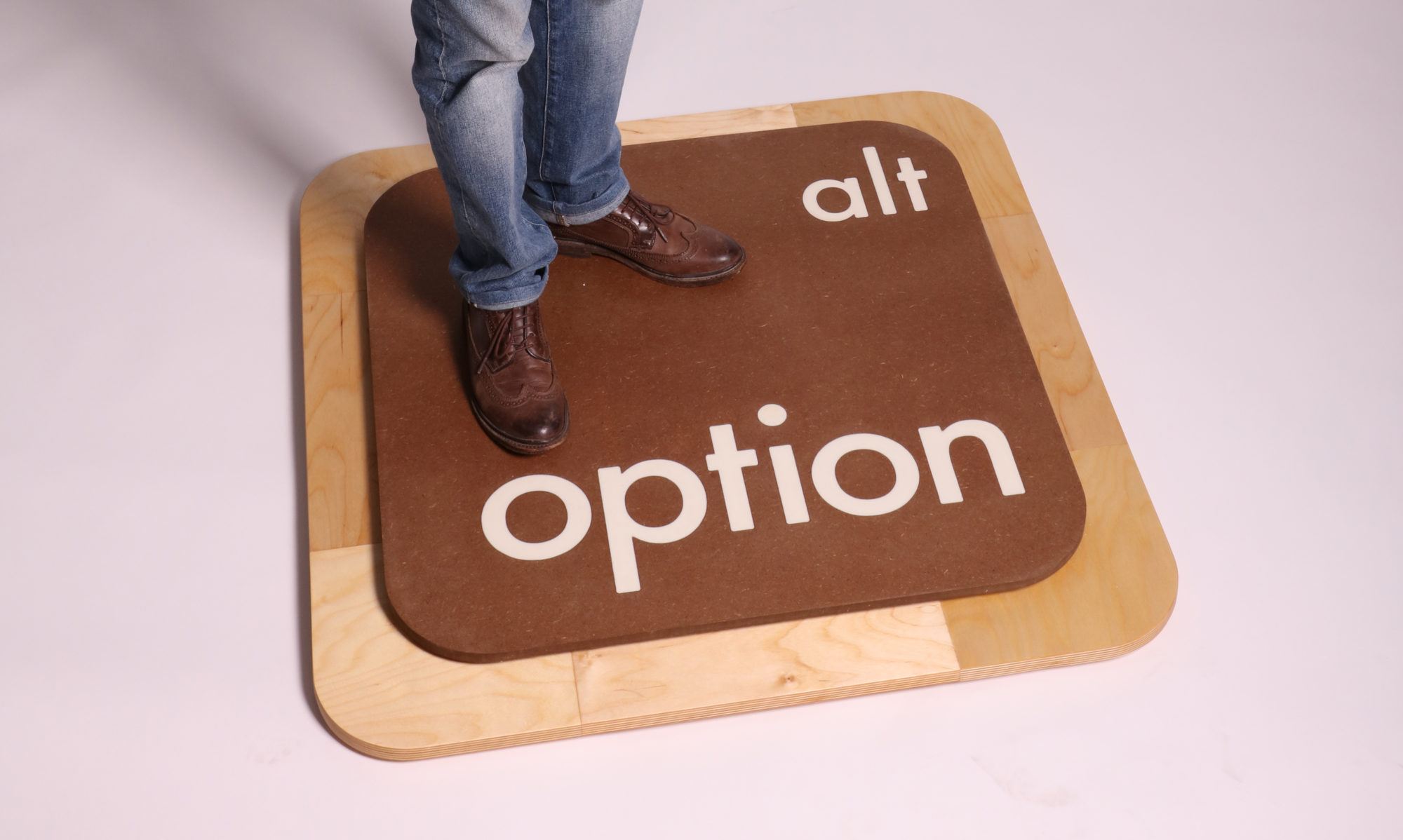My modular board game, Invasion, was originally inspired by an experience in class with virtual games that introduced me to the concept of socially aware game design. One of the games that sparked my interests was Factorio, a game centered on resource extraction and automation. While its gameplay mechanics are impressive and engaging, I found myself disagreeing with the underlying narrative: the player’s advancement depends on the destruction of the planet’s native ecosystem, which is portrayed as an endless horde of alien bugs. This depiction not only dehumanizes indigenous resistance but also reinforces a colonial exclusive mindset that doesn’t give the Natives any true chance to win. So, I took it upon myself to introduce a similar concept, only this time with two opposing sides; each with advantages and disadvantages attributed to their culture.
after looking back in my discography, however, I came to realize that I took quite literally no pictures of the prototyped version of this game, that is except for a few aftermath photos of what it looked like after I had torn it up and used it to create the final iteration of the game.
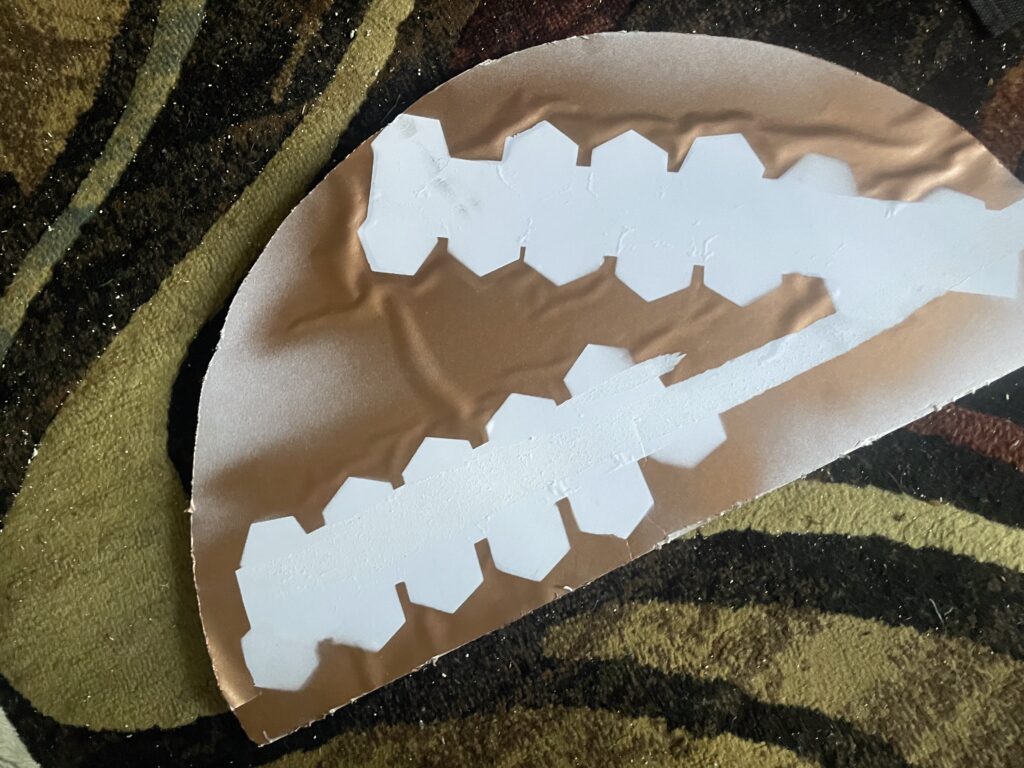
The picture seen here is just half of the base part, which connected the rest of the modular tiles on top of it through a slitted grid of 43 segments for modular tiles, also cut out with that same material, foam board. I guess I was so wrapped up in creating a finalized version of this game, that I didn’t take the time to document the prototype to my wishes. Especially since I was so focused on iterating the game until I had such a clean final product. In the end, my new goal was to make a colonizing/defending/battling simulator civ game like Civilization 6 or Settlers of Catan; However, first I needed to figure out how to refine the game mechanics, as originally when I had built the prototype, the only playability that I had accomplished was movement and action cards. However, this seemingly made the original play tests of the game feel very un-dimensional and flat. Kinda lacking a sorta thrill if you will. So, I decided to hit the white boards in the laser cuter room and begin working on a mapped out description of a battle system.
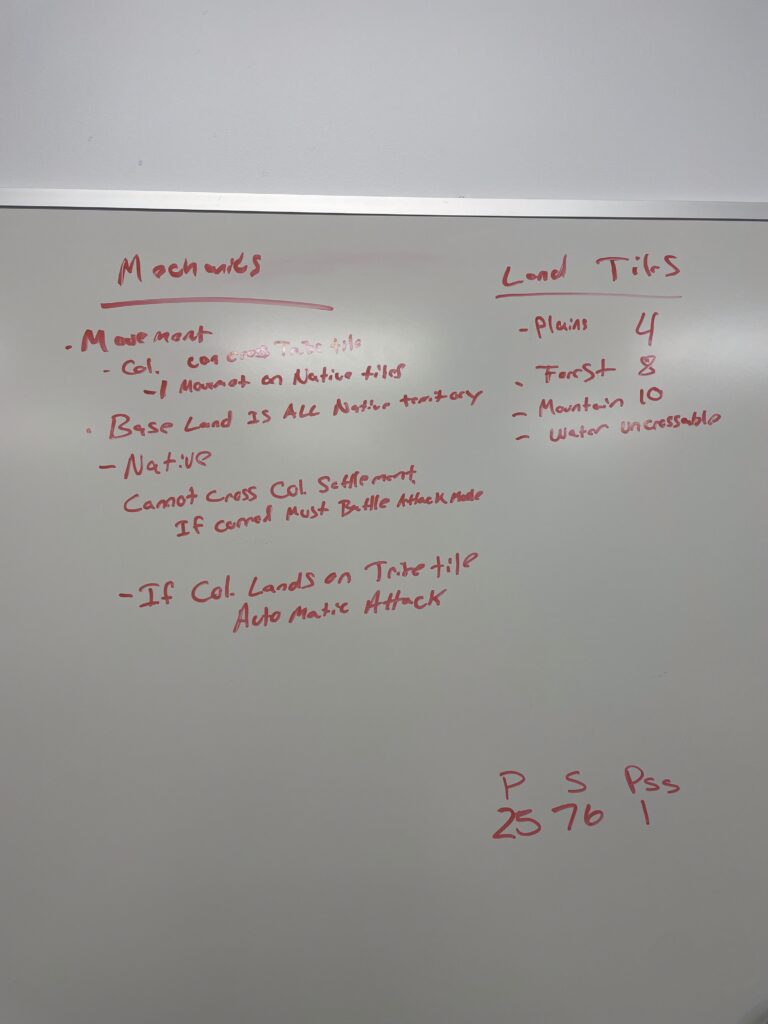
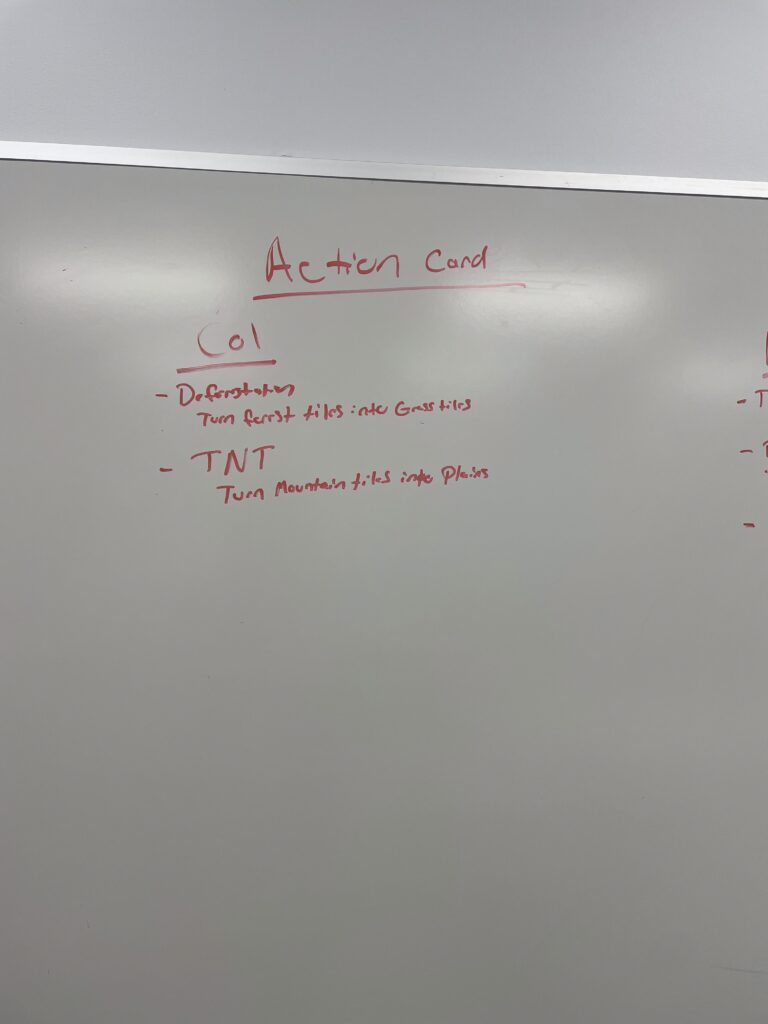
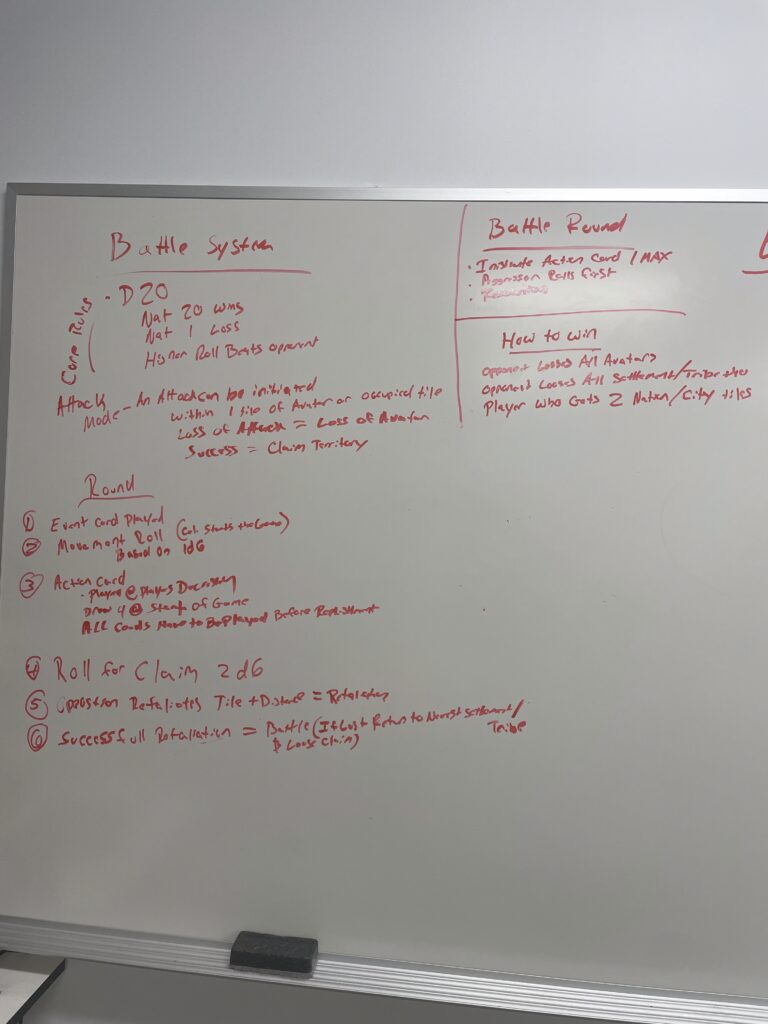
Overall the battle system added a huge benefit to the game’s final touches, as well as a touch of excitement that I knew the final game needed. A big change that I inevitably ended up incorporating into the final rules was also the un-inclusion of an Event card deck/system, in which originally I had planned on making it so that every time a player rolls a 13, they must draw an event card, which would in turn determine how that round would play out, with advantages and disadvantages towards certain sides throughout the gameplay. Later on, I tried incorporating the concept of drawing an Event Card before every round. However, after completing quite a few play tests at home, I then decided that I didn’t want to junk up the rounds with too many mechanics. So, in turn, for the final set of rules I decided to axe this completely.
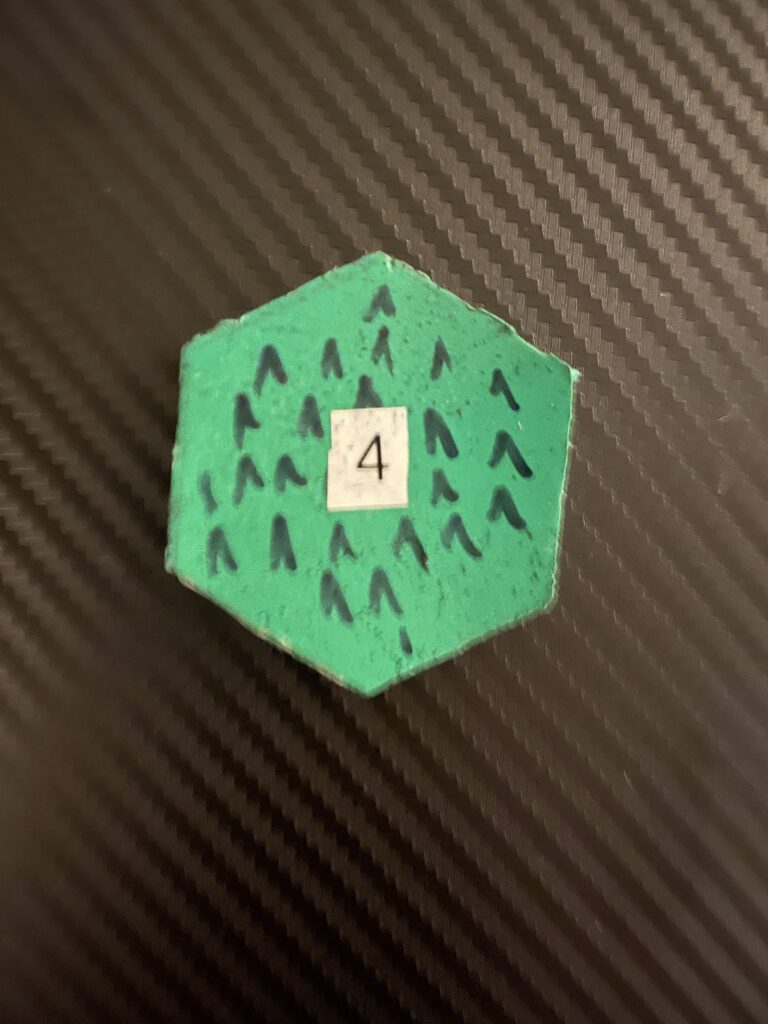
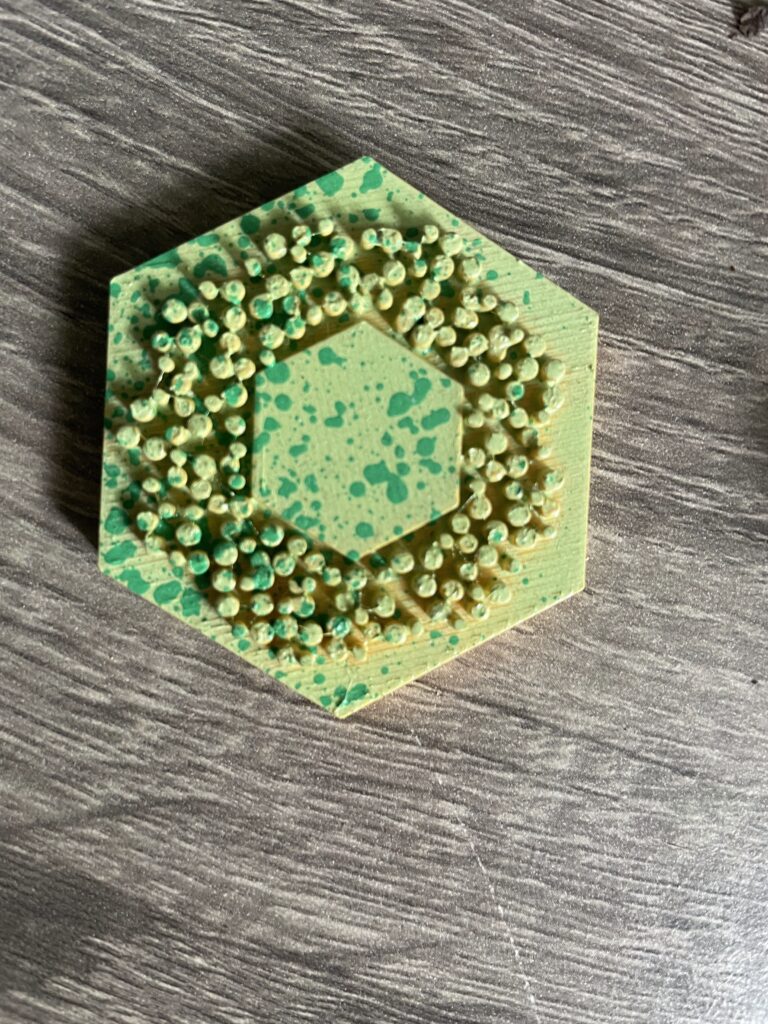
Another game iteration that I changed throughout the process of polishing this game into a wonderfully crafted final product, was the look and feel of the board and tile pieces themselves. For every piece, I had originally planned on having a numerical value on each tile correspondent to that said value, as originally I thought this would help aid the player in understanding how to play better, and although when I removed these numbers, the overall class reactions seemed to originally be against that decision, I still fully back my decision to remove the numbers as it not only makes the game look more aesthetically pleasing, but with only 3 numerical values to remember, I thought it was also a fun way to get players to learn and actually comprehend how to play, rather than being told what to do. I also upgraded from a spray painted foam board cut out, to a series of evenly 3D printed clean cut tiles with texture and character to them, which I then painted when completed.
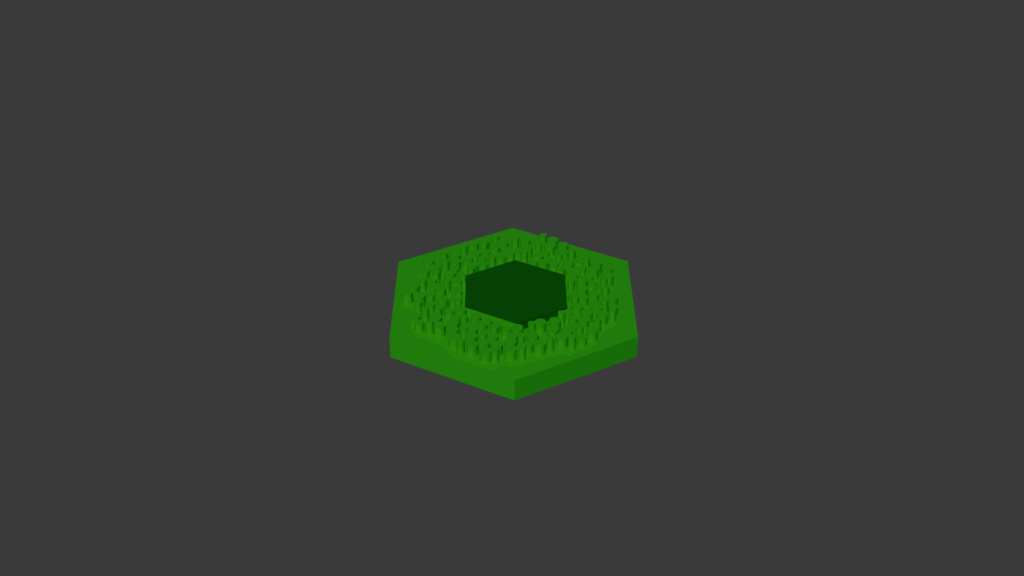
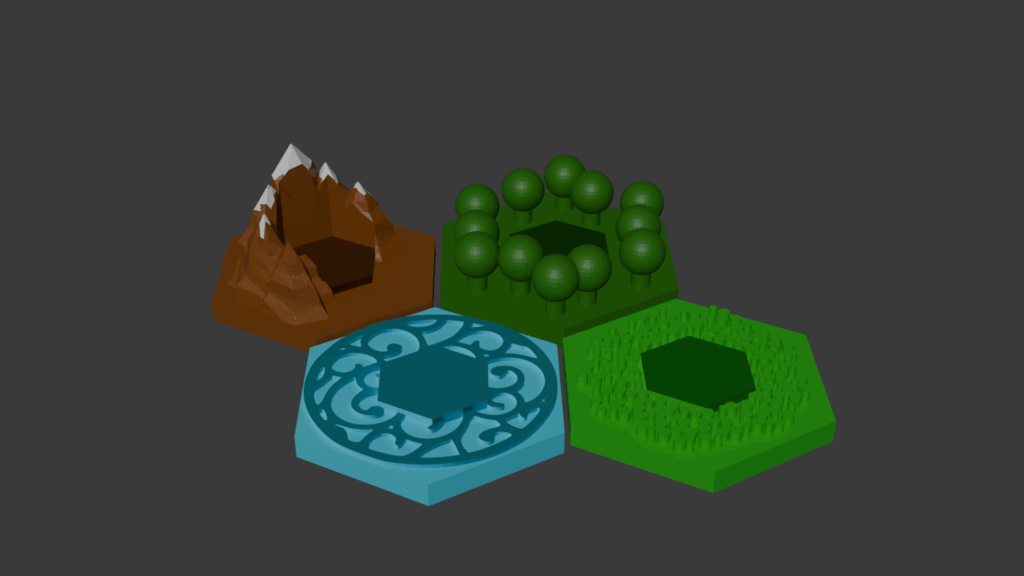
I accomplished this clean finalized look by combining 3D models that I was able to find off of the internet, with an excruted hexagon shape, and meshing the two together in blender before sending it to print as an STL file. Above are some examples of what the 3D models of the physical pieces looked like before they were sent to the printer.

I then decided, I wanted the actual board piece itself to be something a little more crafty than a cut out foam board, so I hit up the wood shop in efforts to create a base that all the modular pieces could live on out of plywood. I also cut this board to be a hexagon, to go with the hex aesthetics of the game.
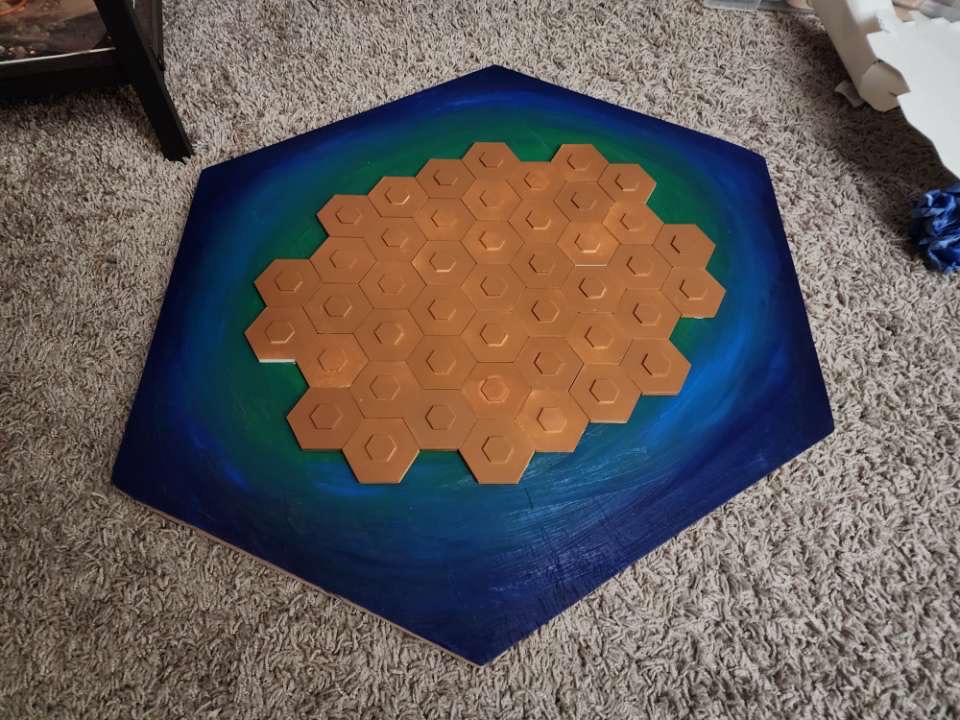
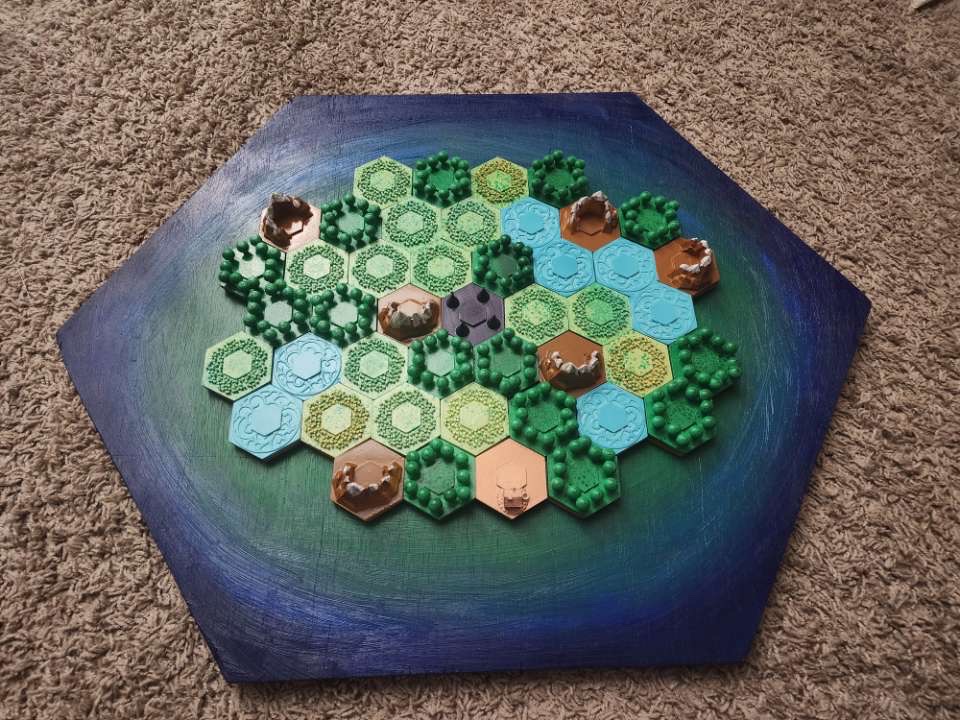
With a little paint work, I ended up making the overall look of the game beyond what my original expectations for it were, and I couldn’t be more happier with how it turned out. Below is a video describing in depth, step by step detail of how to play the game, Invasion.
Overall, I think that there was a huge difference in what took place at my apartment, vs the play tests that went down at school. Anyone I introduced the game to at home seemed to take more of an interest in the game, as they were not only seeking a thrilling and fun experience, but they were also willing to learn about how to play and have strategy and all that good stuff. Simply with the original rule book that I had for everyone in class, this wasn’t enough. Nobody was receiving the hard core understanding of mechanics and why certain things are the way they are throughout the game. I found many of my classmates questioning the game before taking the time to understand it; which is totally fine. However, for some reason it was night and day in terms of enjoyment of the game itself. My friends at home truly took a liking to what I had created, while in school, it felt almost as though they were looking for things to change, not for the better, but rather for the easier route of not having to memorize complex game mechanics with layers and steps to them.

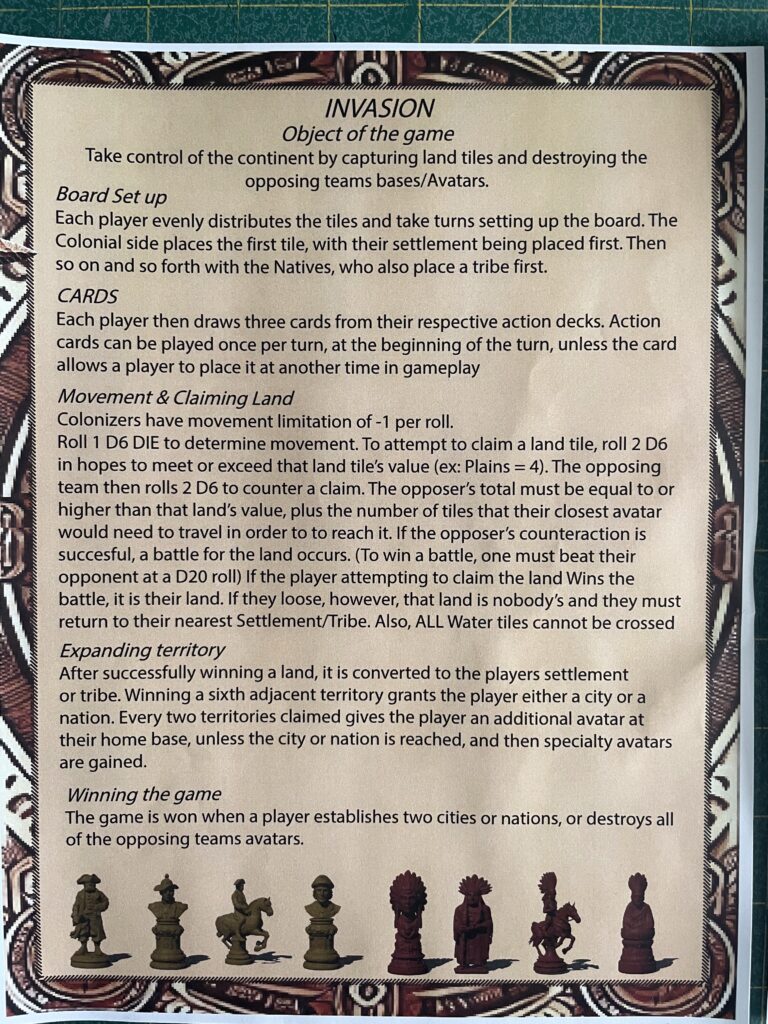
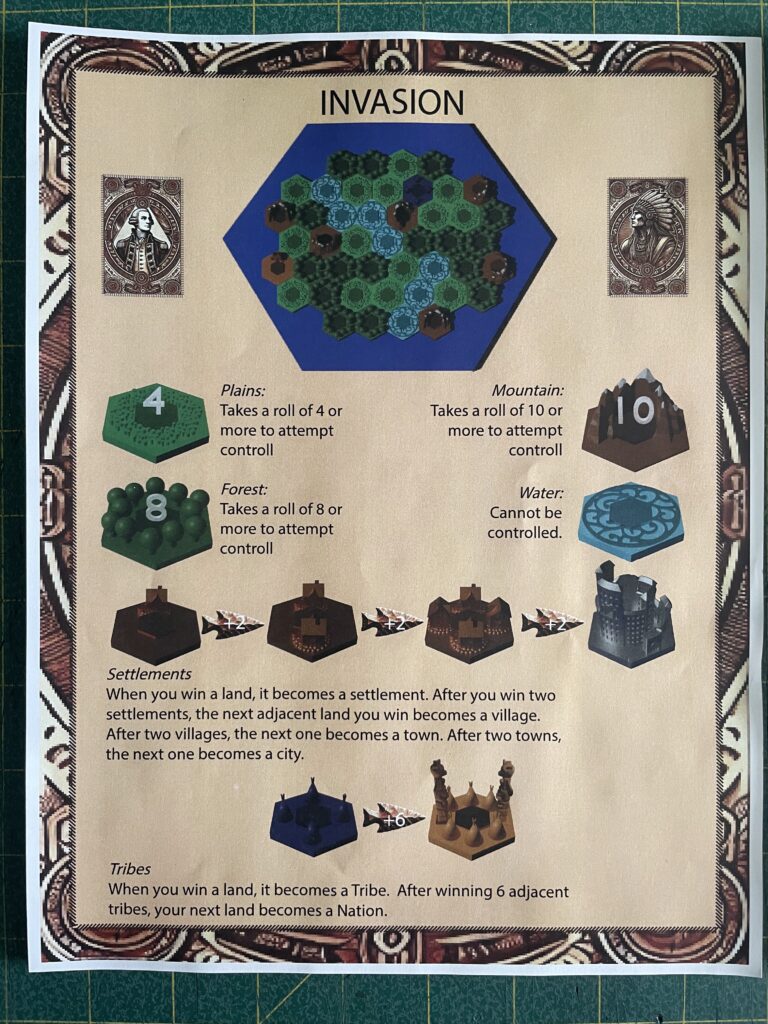
Finally, I decided that a great way to help my peers understand the game more without it feeling like a bore to them, was to add an in depth visualization/instruction manual to go with the finalized version of the game. Here, I showed not only how certain mechanics worked in the game, but I also laid everything out in a much more visually appealing way than I had the original instruction sheet; as the original instructions were simply words conjoined all over a google doc, which understandably can get dull quickly for certain players who are more visual learners.
Overall, I think this project was a great experience for me in terms of learning how to take a concept and fully flesh it out. I mean everything from minor detailing on the board itself to a visualizer to go with the game as though it was in a box at some game store. I also learned who my target audience for this game was. My one nerdy friend Johnny seemed to like it the most, and he has ran quite a few DnD campaigns before. All around I had fun making this and would recommend that everyone uses the resources provided by the school as without these resources I wouldn’t have been able to complete such an amazing piece of work in such a short amount of time.
